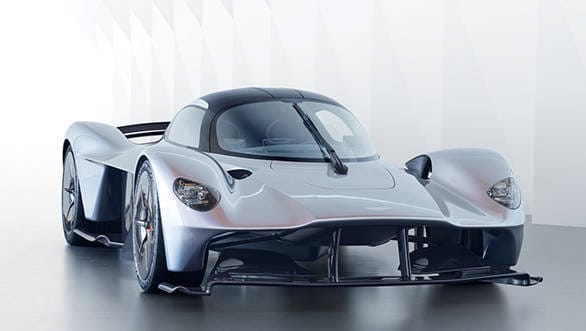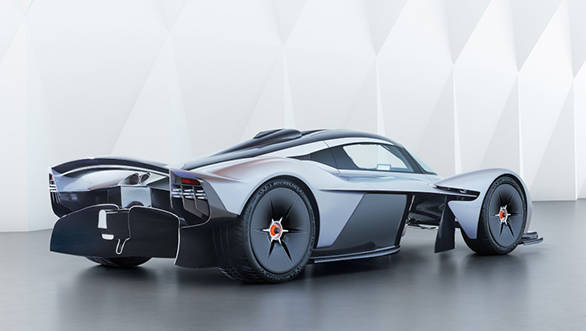More images and details of near production-ready Aston Martin Valkyrie released
Aston Martin has just revealed a whole load of images and details about its Valkyrie hypercar. While the overall exterior profile of the first Aston Martin Valkyrie we saw still remains, there have been quite a few changes to the design to improve downforce thanks to Adrian Newey's never-ending quest for more downforce. One of the most noticeable changes is the two openings that have been made between the cockpit and the front wheel arches. Newey found that adding them would increase downforce considerably by working the front wings much harder.

The entire cockpit's upper body and lower tub are shaped to occupy the space between the huge Venturi tunnels that feed large quantities of air to the rear diffuser. This, according to Aston Martin, helps generate huge amounts of downforce without having to use "additional aerodynamic devices that would spoil the purity of the styling".

The amount of effort Aston Martin has made to save weight is quite astonishing. Let's start with the Aston Martin badge on the nose. The good folk at Aston Martin found that a regular badge is "too heavy" and that a sticker is "not befitting for a car of the Aston Martin Valkyrie's quality and cutting-edge nature". So the design team went ahead and made a chemical-etched aluminium badge that's just 70 microns thick. To put things into perspective, that's 30 per cent thinner than a human hair, and 99.4 per cent lighter than a regular badge. The badge, nicknamed the lacewing, will be attached to the painted body and will be covered with a coat of lacquer.
Moving on to the Aston Martin Valkyrie's headlights, the designers haven't bothered to conceal any of the elements in the spirit of "celebrating the engineering rather than concealing it behind cladding". The low- and high-beam elements are attached to an exposed anodised aluminium frame. As a result, the headlights are 30-40 per cent lighter than the lightest production headlamps from Aston Martin. Even the centre high mounted stop light (CHMSL), which is mandatory for road cars, hasn't been left out of this. It is mounted on the small shark fin running down the centre of the car's airbox and body work. The light is 5.5mm wide and 9.5mm long, making it the smallest CHMSL unit in the world.
The interior of the Aston Martin Valkyrie takes the word minimal to a whole new level. The brand says it was "keen to keep distractions to a minimum and focus the driver on the road ahead". So they stripped the dashboard and centre console of all the controls except for the hazard lights and the electronic parking brake. The large rectangular steering wheel, which looks like it came of an LMP1 car, houses all the switchgear and an OLED display which replaces an instrument cluster. To ensure that there aren't any unnecessary elements on the outside to disturb the aerodynamics, Aston Martin has removed the ORVMs and replaced them with rear-mounted cameras that provide a video feed to the display units located inside at the base of the A pillars. There's also no rear-view mirror since there's no rear windshield because of the roof-mounted air intake that feeds the rear-mounted engine.
To maximise the space inside, the seats â€" which will be 3D scanned to follow the contour of the customer's back â€" have been mounted directly onto the carbon-fibre tub. Occupants (yes, they say there will be enough space for two adults in that tiny cabin), will have to sit with a feet-up position like in modern Formula 1 or LMP1 cars. The seats will come fitted with a four-point harness as standard, while a six-point harness is optional for those who like to hit the track more often.
There are no specifics on the Aston Martin Valkyrie's powertrain as yet, but rumour has it that it will get a naturally aspirated 6.5-litre V12 that produces over 1,100PS of power!